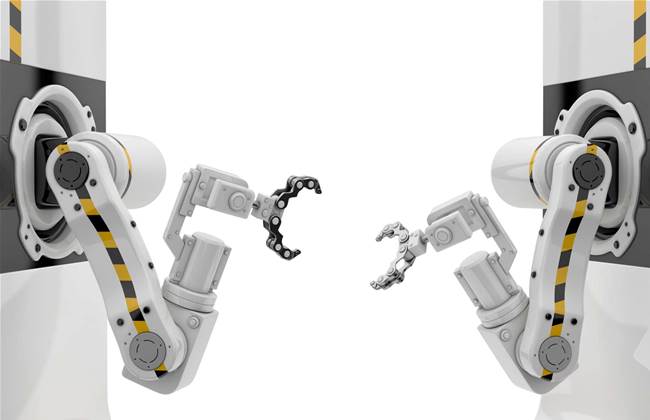We will very soon bear witness to change - driven by technology - that will strike at organisations with the power of a tsunami, unleashing disturbing consequences to our professional and private lives.

At a personal level, pervasive computing and digital innovations are changing our lives at a frenetic pace. Technology is now a core part of our lives, and we are part of a fast evolving and connected global community.
At a business level, these same innovations are presenting tremendous risks and substantial opportunities.
It is not coincidental that both effects are strongly correlated. New customer expectations are forcing the reconfiguration of business processes and delivery models. This issue is perfectly expressed by that famous Jack Welch quote:
“If the rate of change inside an institution is less than the rate of change outside, the end is in sight”.
The foundations of these seismic changes are two-fold. On one side, there are five megatrends enabled by technology innovations: mobility, cloud flexibility, collaboration, personalisation and analytics.
On the other side, there are substantive generational and cultural changes. We are immersed in the age of impatience, with the always-on culture increasing our desire for speed and ease. Then, irremediably, the collision of these two fronts is filling the ‘extinction gallery’ with iconic organisations.
This current social and economic shift is known as the ‘digital disruption’. However, what we are experiencing is just the initial ripple of a sequence of waves that will continue to compose and accelerate.
The ‘sharing economy’ is a good example of the megatrends and cultural changes that are enabling paradigm shifts across disciplines, preparing the next wave of disruptions.
Uber , Airbnb and Lending Club are some of the many cases of collaborative consumption where internet-based reputation and app-enabled communities are replacing individual ownership by shared access.
The 'internet of things' will bring automation in nearly all fields, with billions of devices connected in the next few years—many of which will be able to make micro-decisions. Environments inundated with sensors, plus advances in predictive analytics, will give us an unprecedented level of personalised experience.
The current 3D printing achievements are astounding. Jet engines, houses, blood vessels, tissues and self-assembling robots can be printed today, when we are just at the beginning of the development of a discipline that promises to change things forever. When domestic and affordable 3D printers are able to print more sophisticated objects, industries will be shaken.
We will soon be able to print most of our needed artefacts - and retail, supply chain and manufacturing jobs, organisations and economies will be profoundly affected.
Yet the ultimate disruption will be caused for the ‘rise of the smart machines’, which will be capable of absorbing millions of middle class jobs in a few years.
Driverless cars will change the business models of the car and insurance industries. If cars are able to operate without humans, it will be very inefficient to own private cars. We will surely see a flourishing inexpensive human-less cab service, dispatched to where you are with the touch of a finger on your personal screen.
Narrative Science is already using an artificial intelligence (AI) platform to publish perfect articles on Forbes, replacing financial analysts and writers. IBM’s Watson is on its path to work as an assistant, an advisor and even as a trained expert in almost any field.
IBM is also developing neurosynaptic chips with brain-inspired computer architecture, capable of managing senses and pattern recognition capabilities. Like IBM, many tech giants are pouring substantial resources into AI.
All evidence seems to indicate that the development of holistic computing intelligence is not that far away. Some scientists, including Ray Kurzweil, predict that at the current pace of technological progress, we are not that far from ‘singularity’—a point in time when artificial intelligence exceeds human intelligence, with astonishing consequences for humanity.
With evolved smart machines, most knowledge workers will find their career paths disrupted.
Software-based artificial intelligence entities have the particularity of having marginal costs of production near to zero, a big difference compared to expensive robots taking over physical jobs. Gartner predicts that this ‘digital industrial revolution’ will provoke social unrest, since the pace of destructions of jobs will exceed the pace of creation of new ones.
We will face change at a pace we have never seen before. Regrettably, our ways of informing strategy development will find solid limitations, since shaping strategy based on what we know about the past assumes a linear future, and that line will be broken.
Fatefully, the Darwinian principle that has ruled our existence from the beginning of time will continue determining our journey into the future.
For nations, organisations and workers, “It is not the strongest who survives, not the most intelligent, but the one most responsive to change”.
This is the second in a series of posts by guest columnist William Confalonieri on the subject of digital leadership and the role of the CIO. You can read his first post here. Stay tuned for some fresh perspectives next week.




.png&h=140&w=231&c=1&s=0)






 iTnews Executive Retreat - Security Leaders Edition
iTnews Executive Retreat - Security Leaders Edition












_(1).jpg&h=140&w=231&c=1&s=0)



